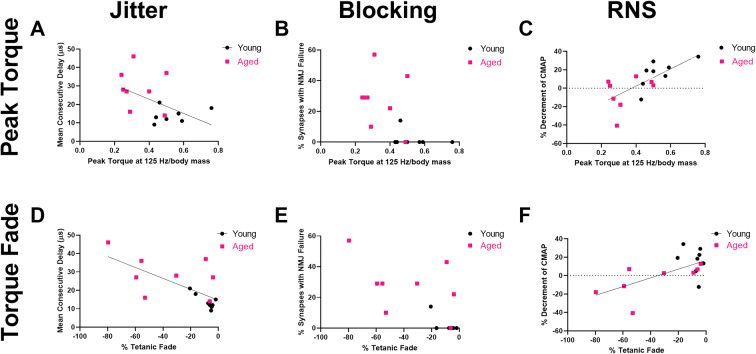Fig. 4.
Peak plantarflexion torque and torque fade correlate with measures of NMJ transmission defects. Peak plantarflexion torque (normalized to body mass) demonstrated no significant correlation with a single-fiber electromyography (SFEMG) jitter (Spearman rs = −0.4948, p=0.0532) but significant correlations with b SFEMG NMJ blocking (Spearman rs = −0.6418, p=0.0091) and c CMAP amplitude decrement on RNS (Pearson r=0.6941, p=0.0029). Young rats, n=8 (3 females, 5 males), and aged rats, n=8 (3 females, 5 males). Tetanic fade % demonstrated significant correlations with d. SFEMG jitter (Spearman rs=−0.6406, p=0.0089), e blocking % (Spearman rs=−0.6777, p=0.0053), and f RNS decrement (Spearman rs=0.5088, p=0.0464). Young rats, n=8 (3 females, 5 males), and aged rats, n=8 (3 females, 5 males)

